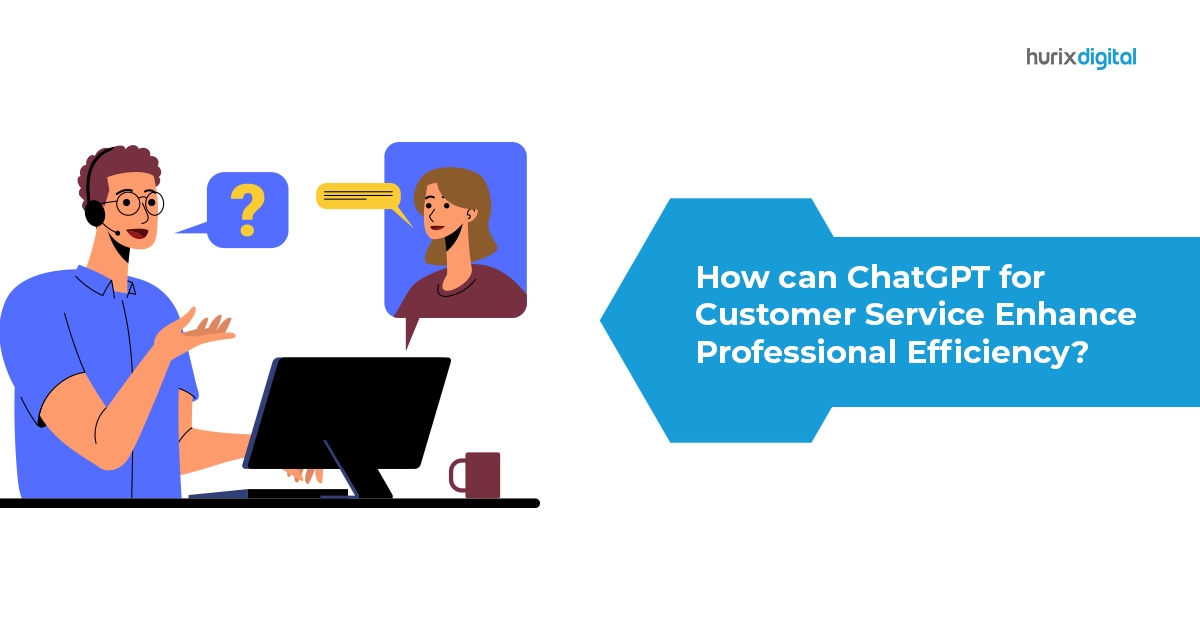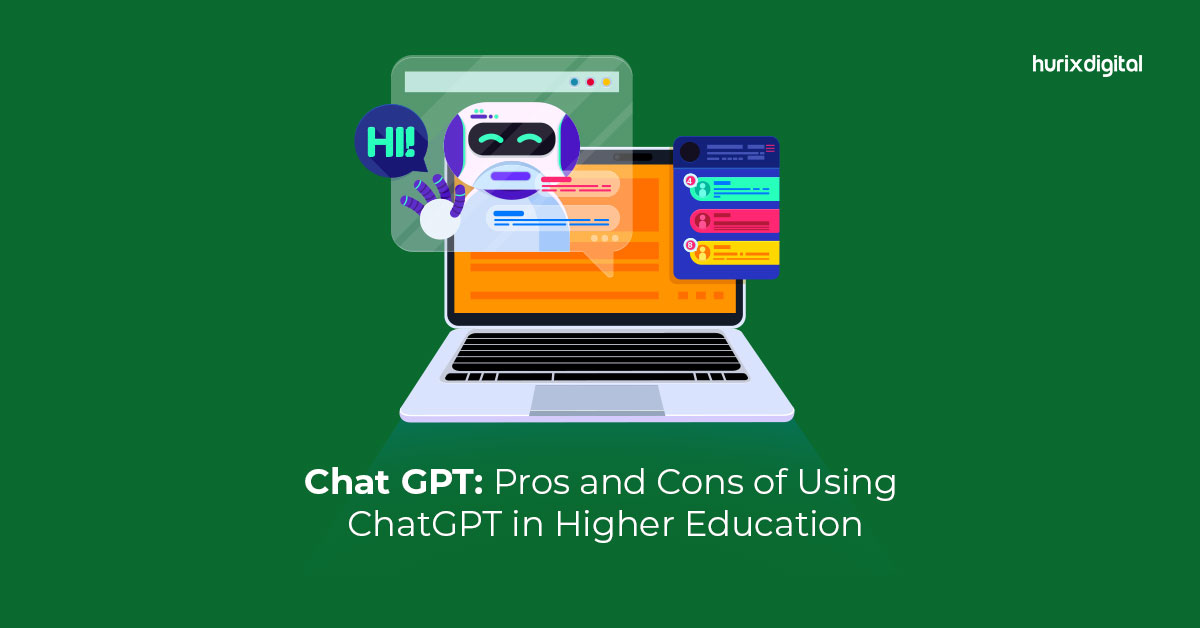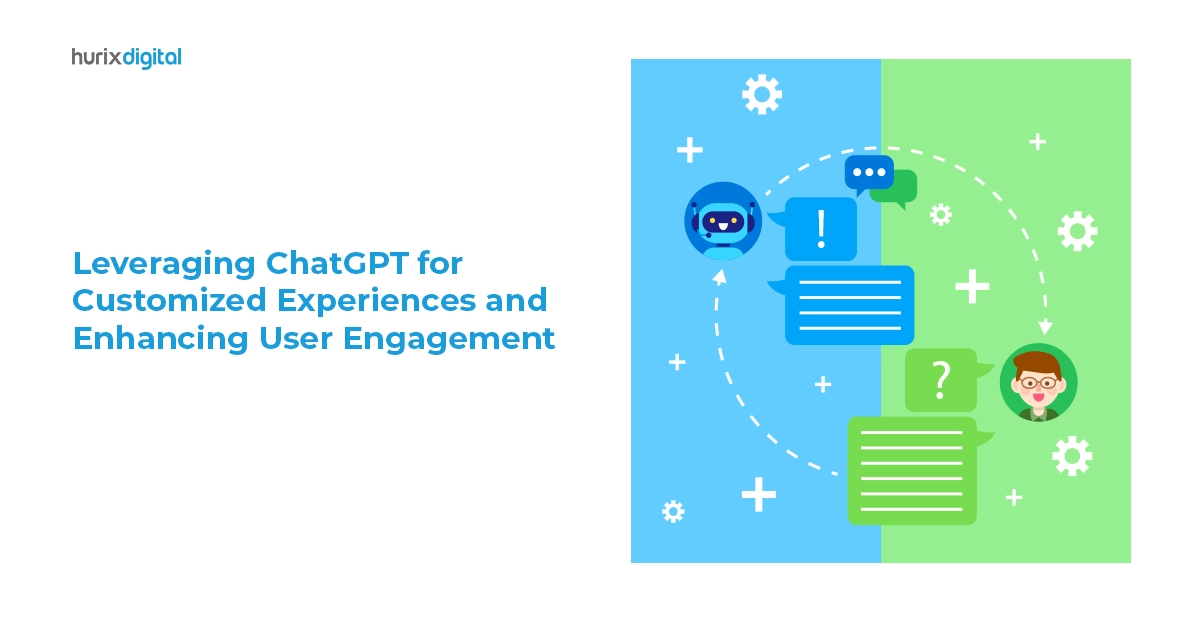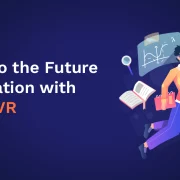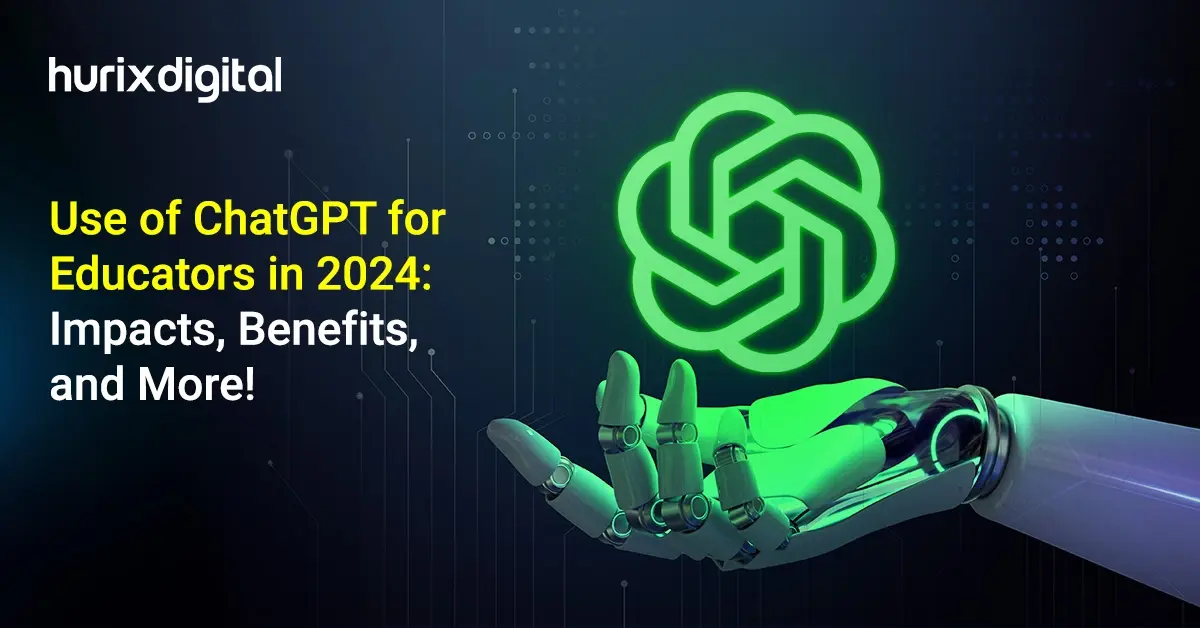
Use of ChatGPT for Educators in 2024: Impacts, Benefits, and More!
Summary
This article outlines the top 10 ways of using ChatGPT for educators. It also discusses the benefits of using ChatGPT for educators in the classroom and beyond.
AI in the educational sector is thriving by leaps and bounds. Hence, it should come as no surprise that ChatGPT has become widely popular among both students and teachers.
It is also not surprising that the market size of AI in education reached USD 4 billion in 2022 and is estimated to increase by 10% CAGR from 2023 to 2032.
The future of AI in education is promising owing to the growing demand for personalized learning resources. Today, adaptive and automated tests, practice chances, individualized tuition, feedback, and topic suggestions are all made possible by AI systems like ChatGPT.
This is one of the primary reasons why ChatGPT for educators has emerged as a beneficial tool with a huge array of advantages.
This article outlines the top 10 ways of using ChatGPT and its impacts on the professional activities of an educator in the classroom and beyond.
Table of Contents:
- 10 Ways ChatGPT for Educators Aids in Learning Practices
- Helps in Creating Personalized Lesson Plans
- Used in Assessment and Grading
- Enables Creative Ways of Group Discussions
- Helps in Proofreading and Grammar Checks
- Supports Students with Special Learning Requirements
- Aids in Finding Teaching Plans and Resources
- Facilitates in Curating Teaching Aids
- Helps in Planning and Navigating Professional Communication
- Assists to Engage Students in Creative Thinking
- Aids in Research and Development
- Conclusion
10 Ways ChatGPT for Educators Aids in Learning Practices
The coming together of AI and higher education is revolutionizing the way of learning. ChatGPT for educators has a wide array of benefits. Some of the key impacts are discussed below-
1. Helps in Creating Personalized Lesson Plans
Making lesson plans that suit the various learning demands and styles of pupils is one of the biggest challenges for teachers. ChatGPT for educators can help create individualized lesson plans based on unique student profiles, which can be a critical step in the process.
Teachers can input student data into the AI system, including learning preferences, skills, and weaknesses. After that, ChatGPT creates personalized lesson plans that reflect the particular requirements of each student, leading to more successful educational opportunities.
2. Used in Assessment and Grading
Teachers can save a lot of time and effort by using ChatGPT for automated grading support.
Artificial intelligence-powered solutions can assist with objective evaluations like multiple-choice examinations and short-answer questions, yet they might not totally substitute traditional grading techniques.
ChatGPT for educators can offer immediate assessments and feedback, enabling students to rectify their mistakes and swiftly improve their comprehension of the subject. In addition to making teaching easier, this promotes a more effective learning environment.
Also Read: 7 Key Benefits of Game-Based Education in a Digital World
3. Enables Creative Ways of Group Discussions
Student collaboration, the development of critical thinking abilities, and peer learning experience are all greatly enhanced by group discussions. By giving teachers stimulating discussion topics, instructive questions, and conversation openers, ChatGPT can help facilitate these talks.
Additionally, the AI can assist teachers in keeping an eye on the discussion’s progress to make sure that all students have the chance to participate fully and express their thoughts.
Teachers can build a dynamic and welcoming environment that promotes growth, cooperation, and learning by using AI in the classroom as a communication tool. With the aid of this cutting-edge AI technology, instructors can concentrate on their most crucial task: fostering their pupils’ inquisitive and imaginative brains.
4. Helps in Proofreading and Grammar Checks
Using ChatGPT’s natural language comprehension capabilities to help teachers assess and enhance students’ written work is another example of how AI can be put to use in the classroom.
Teachers can use ChatGPT to swiftly examine and fix grammatical, punctuational, spelling, and syntax issues in their written documents, including lesson plans, resources, and email correspondence.
5. Supports Students with Special Learning Requirements
ChatGPT can translate any information into languages, including French, Spanish, and Italian, by employing natural language processing (NLP) and machine learning methods. Similar to that, it has an enviable track record for intelligently meeting the requirements of pupils with accessibility issues.
ChatGPT helps students with dyspraxia, ADHD, visual impairment, dyscalculia, and dyslexia to learn and retain information better.
For example, understanding the meaning and context of a piece of writing is one of the main difficulties for dyslexic writers. AI in online education can assist with this by presenting the data in a bigger text format, making it simpler to grasp.
6. Aids in Finding Teaching Plans and Resources
Teachers may spend a lot of time coming up with fresh concepts and finding necessary materials. By offering innovative lesson suggestions and making helpful resource recommendations based on a particular topic matter and curriculum objectives, ChatGPT can assist in saving crucial time.
For example, a teacher searching for innovative ways to deliver a history lesson can enter pertinent curricular objectives or keywords, and ChatGPT will present a range of appropriate lesson plans and materials.
This feature reduces the amount of time needed for lesson planning while also facilitating teachers’ access to the most recent educational resources.
7. Facilitates in Curating Teaching Aids
ChatGPT for educators provides interactive teaching tools to increase student participation in addition to lesson planning. It can recommend a range of instructional games, simulations, movies, animations, quizzes, presentations, and more based on your subject matter.
For example, ChatGPT provides brand-new possibilities when you want to create an interactive video on the planets. The bot may request a delivery window ranging from a few minutes to a few hours for producing high-quality videos.
8. Helps in Planning and Navigating Professional Communication
ChatGPT prompts for teachers can be used to effectively communicate with parents, colleagues, and students by generating customized messages.
ChatGPT can function effectively as your writing assistant, whether it’s for evaluating student progress, extending automatic feedback reports, issuing donation and fee pleas, or creating newsletter editions.
9. Assists to Engage Students in Creative Thinking
Students should be encouraged to improve their critical thinking abilities. Educators can use ChatGPT in education to spark interesting conversations and push students to consider a topic from a variety of perspectives.
To encourage students to think critically and respond creatively, teachers can utilize AI in education to produce open-ended questions, discussion topics, or even hypothetical situations.
Students can improve their ability to analyze and solve problems while also gaining a deeper comprehension of the subject matter by taking part in these interactive exercises.
10. Aids in Research and Development
A powerful strategy for encouraging the interest of learners and encouraging autonomous investigation is inquiry-based learning. Educators can use ChatGPT in the classroom as a helpful research assistant for students to uncover facts, materials, and concepts that will assist with their projects or assignments.
ChatGPT enables students to explore further into their preferred topics, enhancing their comprehension and expertise by providing real-time support and a wide range of perspectives.
By assisting students in formulating research topics, assessing sources, and organizing their findings, AI in education can also help students strengthen their research skills.
Also Read: 5 Latest K-12 Education Trends for 2023
Conclusion
By allowing research and exploration, fostering critical thinking, and supporting study, ChatGPT may substantially enhance autonomous learning. Teachers can leverage and also provide students with the tools they need to acquire the skills they need for lifetime learning by integrating this cutting-edge AI-enabled education in the classroom.
If you’re looking for outstanding higher education AI resources for your organization, get in touch with Hurix Digital. We guarantee only the best with our educational design services, improved learning environment, and connections with leading platforms and technologies. Get in touch with our experts to know more!

Senior Vice President
A Business Development professional with >20 years of experience with strong capability to sell new solutions and develop new markets from scratch. New Market Entry Specialist with experience of working in two of the largest emerging markets – China & India. Also covered other key markets in APAC, US, EU & ME. Exceptional experience of conceptualizing, ideating and selling new learning technologies like VR AR, etc. across multiple industry verticals.
